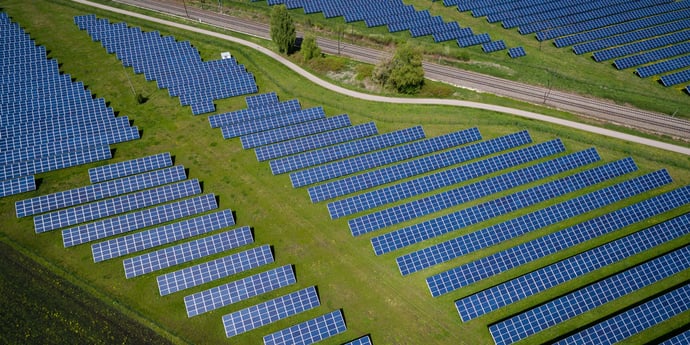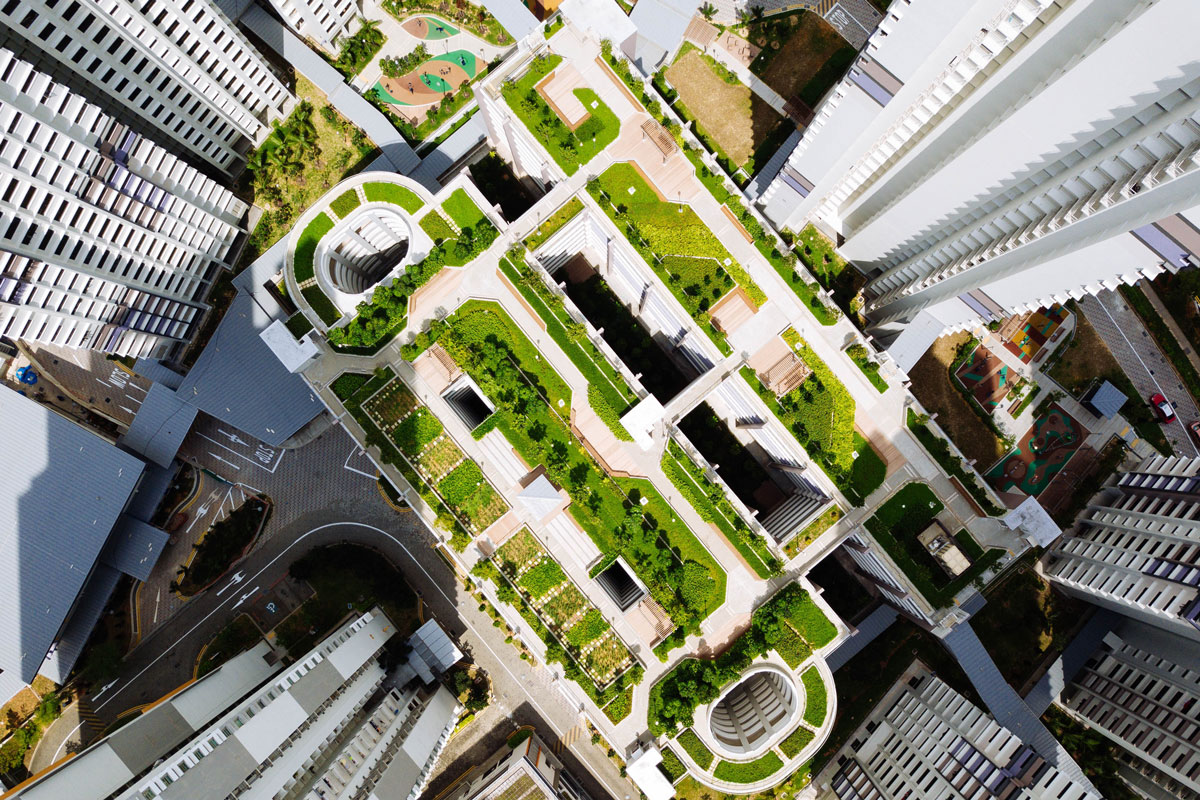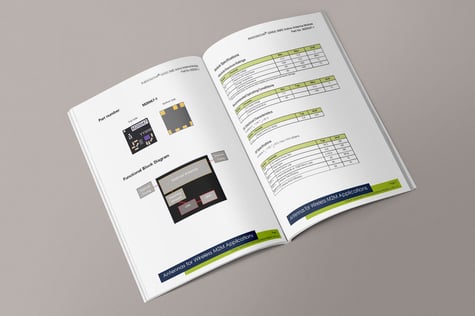Smart cities are taking shape at a rapid pace, bringing convenience, cost savings and security to their inhabitants. But they're not solely benefiting the people who live in them. They're benefiting the planet too, with intelligent technology promising-and delivering-cleaner air, lower CO2 emissions and enhanced energy management. In short, smart cities are making the planet greener. And it's all made possible by product designers, around the globe, developing, integrating and making the most from innovative wireless solutions.
Smart cities, the grid and wireless antennas
From power-saving street lighting in Kansas to pneumatic waste disposal systems in Songdo, cities are getting greener by the day. Behind this green-city revolution are smart grids, electrical networks that tap into wireless technology to transmit information in a more efficient, resilient and intelligent way. They represent an evolution in the electrical grids of yesteryear, which were not built to meet the environmental challenges of today.
If smart grids are the infrastructure behind smart cities, antennas are what make that infrastructure tick. Specifically, innovative antennas made precisely for smart-grid purposes. It is these antennas that are helping smart cities to achieve their planet-saving potential. Here are five ways in which they are doing just that:
1. They're integrated within our cities
Smart tech can seem at its smartest when it throws up innovative ways to navigate the everyday challenges of city life. Earlier this year, the Dutch city of Tilburg trialled a smartphone app that lets people with restricted mobility gain more time to cross the road. Tiny sensors installed in crossing lights on one side of the road continuously scan pavements on the opposite side. If the sensors ‘noticed’ a person carrying the app waiting to cross after the button had been pressed, the green light would stay on for longer. But smart tech isn’t just about making lives easier. It’s also helping cities to become healthier and greener places to live.
Barcelona uses thousands of wireless sensors to monitor air quality and road traffic. In Oslo, the streets are lined with 65,000 smart LED lights, which dim or brighten depending on the illumination needs of an area. Whether they’re helping to clean our air or light our roads, such innovations are made possible by wireless antennas, which allow city authorities to connect to thousands of sensors, enabling energy management and measurement on a large scale remotely.
There are, of course, a huge variety of wireless solutions available for SMART grid applications. In most cases, embedded antennas are the most suitable, as they are smaller (just a few millimetres in some cases) and can be integrated within the housing of a device. They can be either surface-mounted to the host PCB ground plane or attached underneath the housing using a flexible printed circuit board and a cable and connector. Either way, embedded antennas are a cheap, discreet way of making smart devices tick with efficient performance. Put another way, embedded antennas are the invisible heroes of the green-city revolution.
2. They're enhancing energy management

British energy companies have been installing smart meters in homes up and down the country for a number of years now. These meters transmit information between the utility company and customer in real time. From a convenience perspective, this back-and-forth communication lets consumers see how much energy they’re using and at what cost. On the environmental front, smart meters allow companies to gain a more accurate understanding of energy consumption and wastage.
However, it is not only consumers that can benefit from energy management devices. Smart devices monitoring energy consumption and emissions are useful to organisations across a plethora of industries, all needing to comply with increasing environmental regulations and rising demands from customers seeking greener solutions.
This enhanced energy management is made all the more efficient by wireless antennas. Many of which are made specifically for smart-home applications, allowing consumers, as well as companies further up supply chains, to contribute to a more energy-efficient society.
3. They're cutting cords and reducing emissions
Much of the planet’s carbon dioxide emissions are a result of burning fossil fuels to generate electricity. Technology that consumes less power, therefore, is a prerequisite for a sustainable planet. The need for low-power tech is even greater in rural, hard-to-reach areas where weak signals reign. So, if smart grids are to really drive down CO2 emissions, then the technology behind them must consume less power and be capable of operating in low-power areas.
As well as working to reduce our planet’s overall energy consumption, the array of sensors connecting the SMART grid need power themselves. Often reliant on battery power, it is imperative that these intelligent sensors on the smart grid can stay connected for long periods of time. Wireless antennas, like our very own Grandis (covering 863-870MHz / 902-928MHz technologies), can do just that. It consumes less power and also has a smaller LPWA ‘footprint’ than other embedded solutions, making it ideal for fledgling and advanced smart cities alike.
Optimised RF solutions, in general, are crucial for helping to reduce power drain in smart device batteries. Consider the Narrowband-IoT network; NB-IoT has been designed to meet the challenges of IoT and smart city applications. Moreover, NB-IoT testing has provided some battery-operated devices with lives of up to 10 years. However, this 10-year battery life is dependent on careful antenna integration. Small and efficient, embedded antennas drain less power, allowing the device to get the most out of its own battery. In essence, less power used by an antenna is more power saved, both for the smart device and for the planet.
4. They're helping us make urban transport more intelligent

As part of the worldwide effort to reduce air pollution and greenhouse gas emissions, we are being encouraged to switch out our four-wheeled internal combustion engines in favour of our own two feet, public transport and bicycles. As fossil fuel reserves slowly diminish, society needs fast, cheap and reliable public transport – and wireless technology is helping transform public transport.
Taiwan’s high-speed rail network, for example, uses SMART sensors and monitors to track the conditions of tracks and trains. Engineers are notified of any potential breakages before they even occur, reducing downtime and disruption. The movement towards this smart urban transport network is ensuring that 99.2% of train arrivals/departures occur within six seconds of their scheduled time.
In Copenhagen, the Danish capital, a network of SMART sensors, traffic lights and cameras are being used to improve conditions for cyclists. In fact, the system gives priority for cyclists at junctions and red lights, allowing them to save time on their journeys in return for their planet-saving efforts.
5. They're helping us closely manage water supplies
Beyond electrical grids, SMART technology and high-performance antennas are enabling utility companies to detect outages. With more than 70% of the world's population living in cities, small outages can leave thousands without clean water - and without SMART meters and sensors, companies would rely on customer complaints to detect issues.
Continuously monitoring water quality at various points of the grid is now also possible with the SMART grid. In the ever-expanding urban environment, keeping water quality high is absolutely essential. In conjunction with highly penetrative wireless technologies, high-performance antennas are enabling new functions which make grids smarter, people happier and the planet greener.
Conclusion
Smart cities are ushering in a greener future for our planet. And it’s all made possible by highly-efficient, embeddable antennas made specifically for smart living. Put another way: smart cities aren’t possible without smart grids. And smart grids aren’t possible without antennas.
Of course, unlike other digital components, antenna performance is determined in the early stages of design. In other words, it’s all about selecting the right antenna for your application at the start of your project. We can help you do that with our Intelligent Antenna Selector. It’s an easy way to help you find the right embedded solution for your device.




